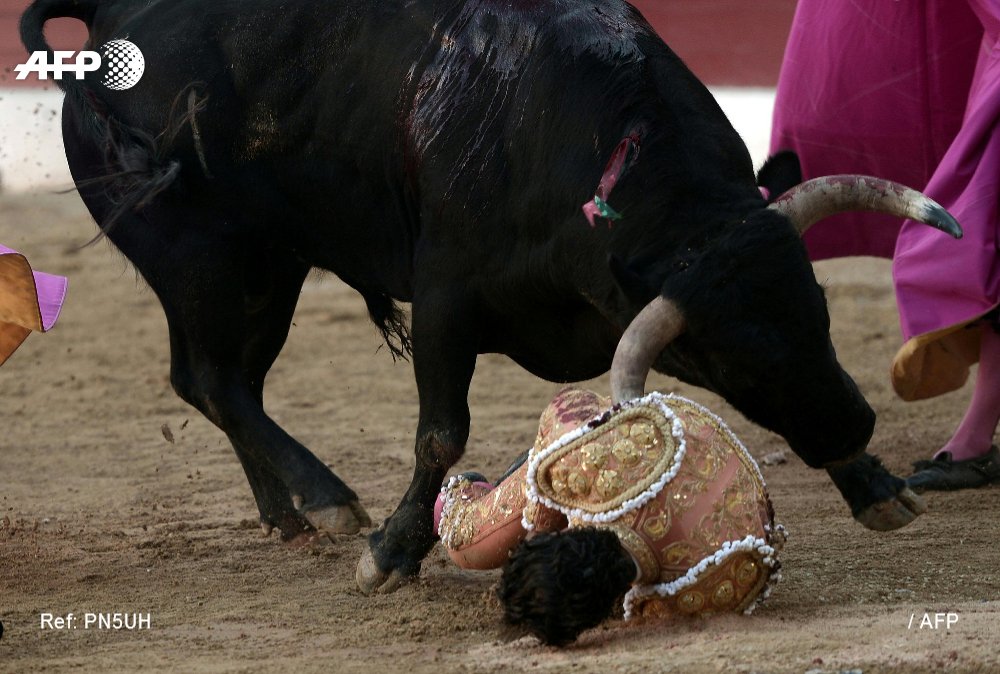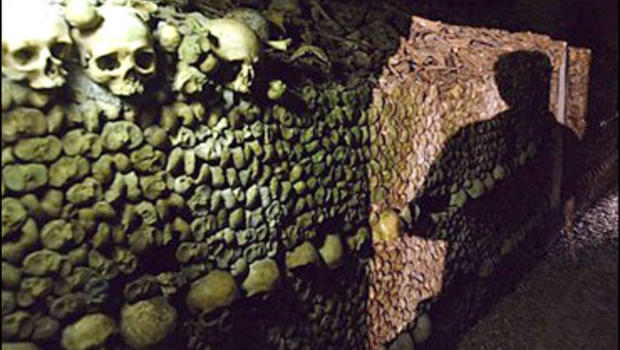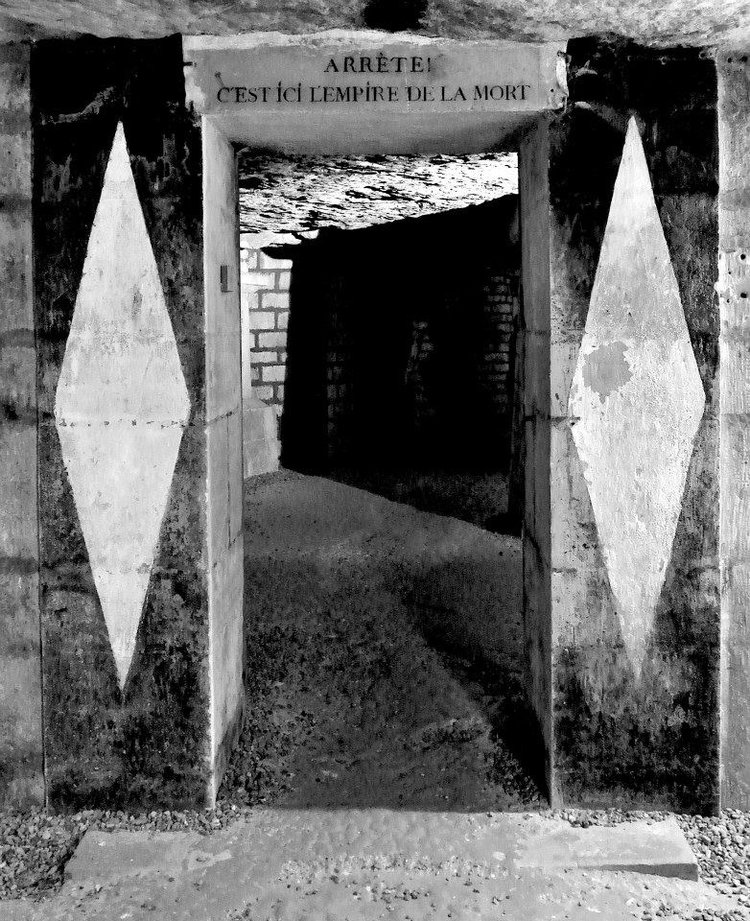Ghouls
Saturday, June 24, 2017
The black trumpets played by the dead.

Craterellus cornucopioides is sometimes known as the black trumpet. They were seen as trumpets played by the dead. #folklorethursday
Tuesday, June 20, 2017
Antlers Are Miraculous Face Organs That Could Benefit Human Health
Antlers Are Miraculous Face Organs That Could Benefit Human Health
There’s so much more to deer antlers than fi ghting and impressing the ladies  Male deer grow these impressive face ornaments every year, in a cycle of life, death and itchiness.
(Lyudmila Chetvertnykh / Alamy)
Male deer grow these impressive face ornaments every year, in a cycle of life, death and itchiness.
(Lyudmila Chetvertnykh / Alamy)
By
Jason Bittel
smithsonian.com
Every spring, in virtually every forest in the continental United States, a miracle happens: All the male deer begin to sprout strange, twisting organs out of their foreheads. You probably know of these magical structures as antlers. But did you ever think about how they work?
Related Content
First, two silver-dollar-sized patches of cells on a buck’s head start to churn out tissue at a breakneck pace. But these winding growths aren’t made up of dead cells, like your fingernails, hair, or the keratin that creates a ram’s horn. These cells are alive.
Come fall, the velvet begins to shrink and die. The antlers become maddeningly itchy, and the male deer runs around trying to get rid of his velvet by rubbing his new toys on small saplings and branches. (These scratching posts are called “rubs”.) Once the velvet comes off, it reveals all the smooth, calcified bone beneath. Now, the buck is ready to wage war against his rivals and fight for his right to mate with all the females he can find.
Animals with bony growths known as horns—rhinos, rams, impala—tend to grow them young and keep them their whole life. Antlers, by contrast, are born anew each year. That's right: This intricate cycle of growth, life, death and itching happens every year.

“They rob from Peter to pay Paul, so to speak,” says Jeannine Fleegle, a wildlife biologist specializing in deer and elk for the Pennsylvania Game Commission. This process is called cyclical reversible osteoporosis, and it starts by targeting areas that do not bear weight, like the ribs.
All in all, studies of deer energetics estimate that the toll of antler generation lags just behind gestation, according to Fleegle. (Similarly, if a pregnant mother doesn't get enough calcium, her body will siphon some from her bones to help build her growing baby's skeleton.) In other words, it’s almost as taxing for males to sprout bones out of their foreheads as it is for females to create a whole new life form in their wombs.
The sad part is, bucks don’t even get to keep those hard-earned antlers for life. After mating season, the males no longer have any use for their antlers, and in fact, keeping them is kind of a pain. So the structures just pop off and get left behind like yesterday’s papers, and the deer go on with their lives.
This might sound ludicrous, given the sacrifice involved in their creation. But deer aren’t sentimental. More importantly, keeping those antlers would be a huge liability. First off, they’re heavy. The largest species of deer, the moose, can have antlers that weigh up to 40 pounds. This is the definition of dead weight.

So why even bother with the whole antler growth thing at all?
For that, you can thank the vagaries of sexual selection. The deer mating system dictates that males guard territories, and retain the right to mate with females within those territories. As you might imagine, possessing a few head weapons helps. And if bigger head weapons tend to defeat smaller head weapons, as you’ll see in any number of YouTube videos, then those genes are more likely to be passed on to the next generation of bucks.

Now get this: If you slice antler cells off the head of a deer and transplant them onto the forehead of a mouse, that mouse will begin to sprout antler-like material.
Perhaps it’s no surprise that some scientists think antlers might hold a few secrets we could use for medicine, nerve growth and even limb regeneration. No one is suggesting growing antlers on people, but imagine what we might be able to do with those cells’ amazing generative capabilities.
Wolfgang Pita Thomas, a neuroscientist at Washington University in St Louis, is one of the believers. “As the antler grows rapidly, reaching up to 2 cm per day, the nerves have to match that pace,” writes Pita Thomas in an email. “This means that they regenerate 10 times faster than human nerve!”
This is important because if we can figure out how those nerves move so fast, we might be able to use it to spur our own nervous system into regenerating when its been damaged, say, in the case of a paraplegic injury. Currently, we have a few ways to accomplish this type of healing in small increments, says Pita Thomas, including grafting nerves from another region and using artificial collagen conduits to can guide nerve growth.
But these methods struggle if the distance the nerves need to cross is more than an inch. By contrast, "the nerves present in the deer antlers can regenerate up to several feet in less than three months,” says Pita Thomas. “We hope to apply the same mechanisms or molecules to one day enhance nerve regeneration in humans.”
Pita Thomas and his colleagues have already identified three of the proteins involved in the antler’s rapid nerve production, and found that sensory neurons grow faster when all three are present in a culture. “We observed that the enhancement of nerve growth was much more than the sum of their single effects, meaning that they work synergistically,” he said.
Other scientists are interested in antlers because of what they might be able to teach us about cell memory, or a cell's future can be shaped by past events. For instance, if a deer suffers an injury to the base of its antler (called a pedicle), it can end up creating a deformed antler at that site for many years after the initial wound has healed. Sometimes the new antler shape lasts a lifetime.
This is yet another one of antlers' mind-blowing qualities, say Michael Levin, a developmental biologist at Tufts University: They can teach us about how animals that can regenerate remember their own shapes.
One explanation for this so-called memory that Levin researches is called bioelectricity, or the tiny, communicative charges traded between our cells. Levin and others have linked this common but mysterious force to things like body shape, limb regeneration and wound healing. For instance, he’s shown that flatworms that have had their bioelectricity tampered with can be coaxed to regenerate themselves with two heads.
As of now, we know far more about how flatworms manage their regenerative powers than deer, but Levin says the role of bioelectricity is likely the same. It’s just that flatworms are tiny, they grow fast, and they conveniently lack spiky face bones upon which scientists might be impaled.
Even what we think we know about antler growth turns out to have new twists. For instance, Fleegle says that there’s a general rule for any critter that the better its habitat is, the more healthy and robust its populations will be. And for deer, that conventional wisdom should translate into massive racks. But a study published in 2009 shows that the truth is more complicated.
Indeed, when does don’t get enough to eat while pregnant and nursing, any male offspring they produce will have stunted antler growth for their entire lives. Amazingly, this holds true even if the male fawns are supplemented with highly nutritious feed.
You might think that this trait would be inherited should the wimpy males ever manage to sire young of their own. Actually, second generation males who were birthed by mothers with a normal amount of food went on to have racks that were more or less typical. All of which points to just how important mothers are in the grand scheme of things, and why Fleegle says she has a love/hate relationship with antlers.
“I get angry about antlers because the boys get all the attention, but the girls never do,” she says.
Remember how antler growth is nearly as strenuous on a deer’s body as being pregnant? Not that it’s a contest, but there’s one activity that dwarfs them both, and that’s lactation—another province of the ladies. According to Fleegle, a doe expends more than three times as much energy during peak milk-making as a buck does to produce his antlers.
It seems both sexes have a rack worthy of our wonder.
Read more:
Sunday, June 18, 2017
Spain mourns slain matador Fandino
Madrid
(AFP) - Spain's royal family joined politicians and the bullfighting
world Sunday in mourning matador Ivan Fandino, gored to death in a fight
in France.

Fandino died in hospital on Saturday after being gored in the ribs by a bull, whose horn punctured his lung, at the Aire-sur-l'Adour bullfighting festival in the south of France
(AFP Photo/IROZ GAIZKA)

The
death of Fandino, a 36-year-old from the northern Basque region, was
front page news in several newspapers in Spain, where interest in the
controversial centuries-old tradition remains high.
Bullfighting
retains its popular aura in Spain, which hosts hundreds of shows
annually in a country of some six million "aficionados" who see it as a
sport that is an art integral to their culture.
Source:
https://www.yahoo.com/news/spain-mourns-slain-matador-fandino-005906884.html
Friday, June 16, 2017
Factory Farms
"L'homme est bon, mais le veau est meilleur."
Bertolt Brecht
Vous avez 4 heures... #BacDeFrancais
Translated from French by Bing
"The man is good, but the calf is best."
Bertolt Brecht you have 4 hours... #BacDeFrancais
Michael Jackson drinking vodka and chilling with dwarf girls.

Michael Jackson drinking vodka and chilling with dwarf girls.
Teens rescued after 3 days lost underground in Paris Catacombs
Teens rescued after 3 days lost underground in Paris Catacombs

Two teenage boys who spent three days trapped underground in the Catacombs of Paris have been rescued.
AP
PARIS -- Two teenage boys have been rescued after three days underground in the skeleton-lined labyrinth of the Catacombs of Paris.
Paris police said they alerted firefighters early Wednesday that the boys, aged 16 and 17, were missing. Police said teams of rescuers, including climbers and sniffer dogs, set out to search for the youths and found them beneath southern Paris a few hours later suffering from slight hypothermia.
It was unclear how the boys got lost.
Sometimes people sneak into the catacombs after the official museum is closed and venture into areas normally off-limits, even organizing special parties or adventure games.
Some 66 feet below Paris, the catacombs hold the remains of 6 million people, transferred there starting in the 1700s as public graveyards were closed.
http://www.cbsnews.com/news/paris-catacombs-teens-rescued-after-days-lost-underground
Saturday, June 10, 2017
Flying Car Collides With Bus LONG VERSION
Japan
- A large tourist bus and a passenger vehicle collided along the
inbound lane of the Tomei Expressway, sending the wrecked passenger car
flying onto the front rooftop of the bus and severely damaging the front
part of the bus. The Toyokawa municipal fire department and other units
rescued the male driver of the passenger vehicle who was trapped
inside, but unfortunately he did not survive.
All of the 47 people who were aboard the bus were transported to hospitals, with at
least 20 people apparently sustaining minor injuries, according to local
police and firefighting officials.
-------------------------------------------------
★ https://goo.gl/jsK3Mf
-------------------------------------------------
All
copyrights reversed to their respective holders. No infringement
intended, all copyrighted images, trademarks and logos are used under
"Fair Use" and belong to their copyright holders.
-------------------------------------------------
- A large tourist bus and a passenger vehicle collided along the
inbound lane of the Tomei Expressway, sending the wrecked passenger car
flying onto the front rooftop of the bus and severely damaging the front
part of the bus. The Toyokawa municipal fire department and other units
rescued the male driver of the passenger vehicle who was trapped
inside, but unfortunately he did not survive.
All of the 47 people who were aboard the bus were transported to hospitals, with at
least 20 people apparently sustaining minor injuries, according to local
police and firefighting officials.
-------------------------------------------------
★ https://goo.gl/jsK3Mf
-------------------------------------------------
All
copyrights reversed to their respective holders. No infringement
intended, all copyrighted images, trademarks and logos are used under
"Fair Use" and belong to their copyright holders.
-------------------------------------------------
Car crashes into bus in central Japan
Published on Jun 10, 2017
A car crashes into a bus in Aichi Prefecture, central Japan, on June 10, 2017.
(video courtesy Toshin Kanko Bus Co.)
http://bit.ly/2rWltgV
http://english.kyodonews.jp
(video courtesy Toshin Kanko Bus Co.)
http://bit.ly/2rWltgV
http://english.kyodonews.jp
Saturday, June 3, 2017
Frances Bavier An American Stage And Television Actress (Aunt Bea)


Frances Bavier was born in New York City on December 14, 1902. Her first Broadway appearance was in April 1925 in "The Poor Nut", the start of a successful Broadway career. She traveled with the USO to entertain the U.S. troops in the Pacific during World War II. Her last appearance on Broadway was in the 1951 play, "Point of No Return" starring Henry Fonda. It ran for 356 performances.
Her first movie was the 1951 sci-fi classic The Day the Earth Stood Still (1951), which was also the first time Frances appeared with Olan Soule. He later went on to play Mayberry's choir director, John Masters, on the The Andy Griffith Show (1960). In the movie, they were both boarders in the rooming house where the alien stayed. She made many movies during the 50s and appeared on TV as featured characters on shows like It's a Great Life (1954) and The Eve Arden Show (1957) before what would become her most famous role, that of Aunt Bee to Andy Taylor (Andy Griffith) and Opie Taylor (Ron Howard) on The Andy Griffith Show (1960).

Subscribe to:
Comments (Atom)









